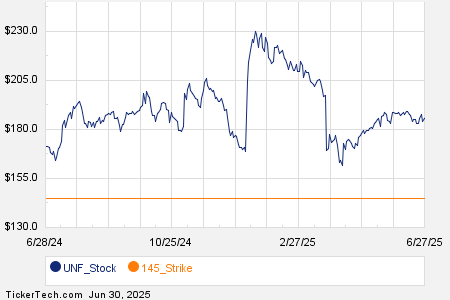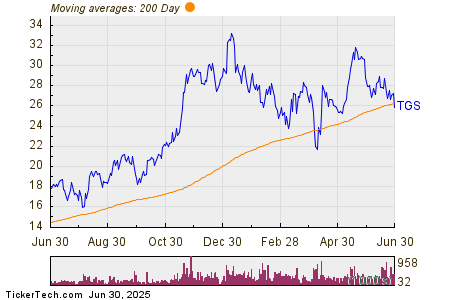The Resurgence of Nuclear Power: What It Means for NuScale Power
Interest in nuclear power is on the rise. Last month, 14 of the world’s banks and financial institutions pledged to support increasing nuclear energy capacity to meet net-zero emissions targets. This pledge follows the endorsement from over 20 countries of the Declaration to Triple Nuclear Energy, launched at a summit last year, aiming to triple global nuclear power capacity by 2050.
After this announcement, shares of several nuclear power companies, including NuScale Power (NYSE: SMR), surged. NuScale is known for developing small modular reactors (SMRs) that may transform nuclear power generation. With growing interest in nuclear energy, we explore what the next five years might bring for NuScale.
Renewed Interest in Nuclear Power
The demand for energy is steadily increasing, while renewable options may not scale rapidly enough to help countries meet their net-zero goals by 2050. Rising energy needs, particularly driven by artificial intelligence (AI), are prompting major tech companies to re-evaluate nuclear power.
Recently, Constellation Energy signed a 20-year power purchase agreement with Microsoft to create the Crane Clean Energy Center and reactivate the Three Mile Island Unit 1 nuclear plant, which shut down five years ago.
Additionally, Oracle is in the process of designing a data center powered by three small nuclear reactors. Chair Larry Ellison mentioned during an earnings call that AI’s energy requirements are “crazy,” and the firm is looking to harness next-generation nuclear technology. While specifics on Oracle’s plans are still unclear, it’s noteworthy that NuScale Power is the only company with an approved design for SMRs from the U.S. Nuclear Regulatory Commission.
SMRs provide a modular and scalable method for generating nuclear energy, catering to the energy needs of various enterprises. Their prefabricated components can be assembled on-site, which may cut costs and reduce startup times—making this technology attractive for firms with extensive data centers.

A data center. Image source: Getty Images.
Challenges Faced by NuScale
NuScale has encountered several challenges. Last November, the Utah Associated Municipal Power System (UAMPS) ended its 2015 agreement with the company to construct 12 reactor modules intended to be operational by 2023.
Initially estimated at $3 billion, project costs spiraled to $9.3 billion, rendering it too costly for UAMPS. Consequently, NuScale’s first operational SMR plan was abandoned, resulting in a $50 million charge for the company.
Future Outlook for NuScale
While NuScale’s design for 50 MWe modular reactors has received approval from the Nuclear Regulatory Commission (NRC), it has yet to gain approval for its 77 MWe design. The latter was developed because the initial economics of the smaller reactors proved unfeasible.
NuScale has requested design approval from the NRC for its 77 MWe models, which it expects to receive by July 2025. However, this approval will not constitute full certification, which is anticipated to take an additional couple of years.
In the past year, Standard Power, a supplier for advanced data centers, announced plans to implement two facilities in Ohio and Pennsylvania incorporating NuScale’s SMR technology. NuScale aims to deploy 24 units of 77 MWe reactors across both locations, yielding a combined output of 1,848 MWe. Standard Power does not expect operational status until at least 2029, indicating considerable time before commercial operations commence for SMRs.
NuScale will likely face increased competition in the coming years. Andrea Kock, deputy office director for engineering at the Office of Nuclear Reactor Regulation, noted that the NRC expects to receive 25 licensing applications for SMRs and advanced reactors in the next five years.
Should You Invest in NuScale?
NuScale holds a significant first-mover advantage, as it is currently the only company with a Standard Design Approval (SDA) from the government. However, the company still requires approval for its larger reactor design before proceeding.
Investor sentiment will largely influence NuScale’s stock based on its progress and setbacks. Therefore, many investors might want to hold off until the company approaches actual commercial operations, which remain at least five years away.
A Second Chance at a Lucrative Investment
Have you ever felt you missed an opportunity to invest in successful stocks? This may be your chance.
On rare occasions, our expert analysts issue a “Double Down” stock recommendation for companies they believe are about to rise significantly. If you’re concerned about missing out, now may be the ideal time to invest before it becomes too late. The numbers illustrate the potential:
- Amazon: if you invested $1,000 when we doubled down in 2010, you’d have $21,266!*
- Apple: if you invested $1,000 when we doubled down in 2008, you’d have $43,047!*
- Netflix: if you invested $1,000 when we doubled down in 2004, you’d have $389,794!*
At this moment, we’re issuing “Double Down” alerts for three outstanding companies, and this opportunity may not arise again anytime soon.
See 3 “Double Down” stocks »
*Stock Advisor returns as of October 7, 2024
Courtney Carlsen has positions in Microsoft. The Motley Fool has positions in and recommends Constellation Energy, Microsoft, and Oracle. The Motley Fool recommends NuScale Power and recommends the following options: long January 2026 $395 calls on Microsoft and short January 2026 $405 calls on Microsoft. The Motley Fool has a disclosure policy.
The views and opinions expressed herein are the views and opinions of the author and do not necessarily reflect those of Nasdaq, Inc.








